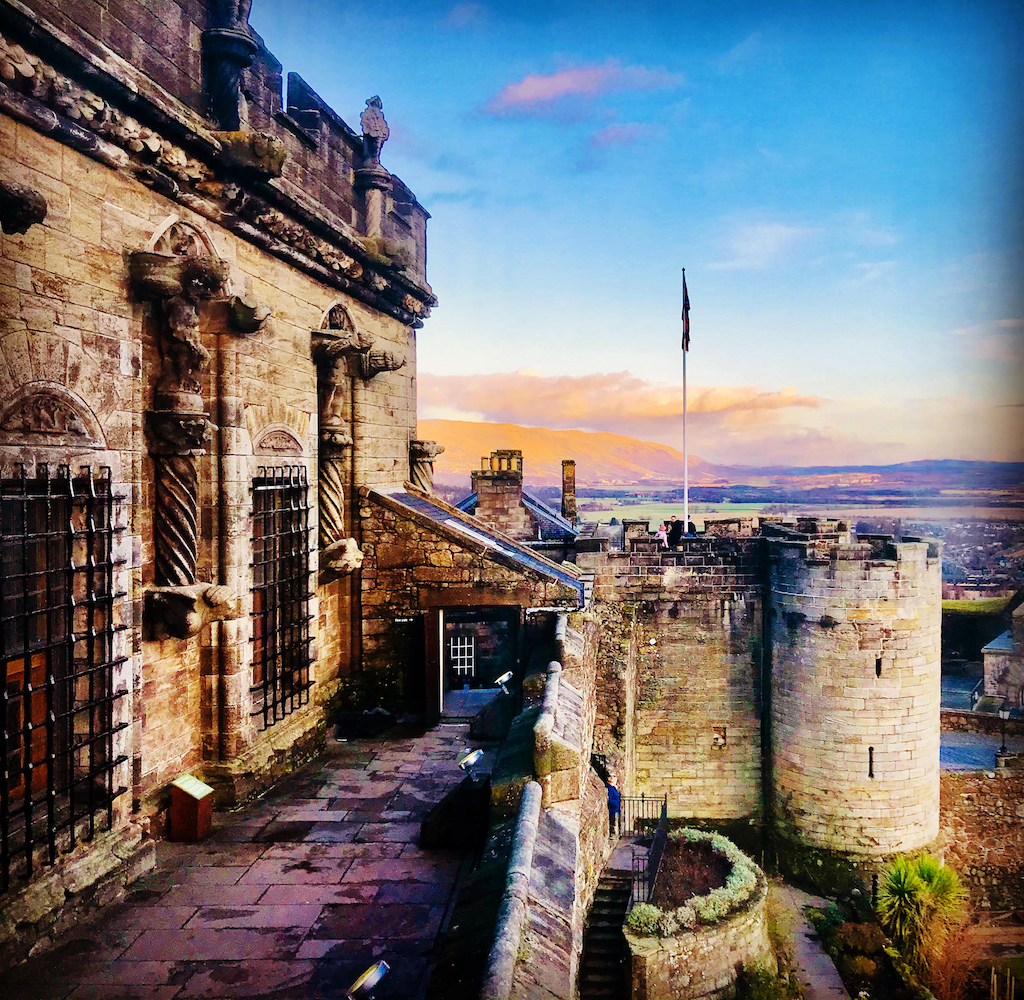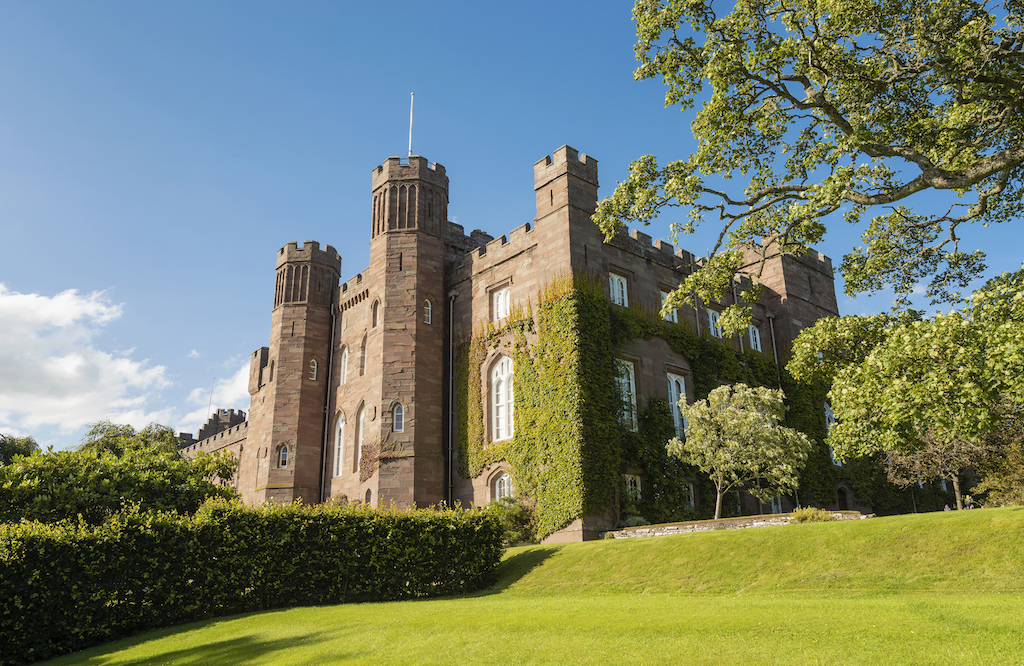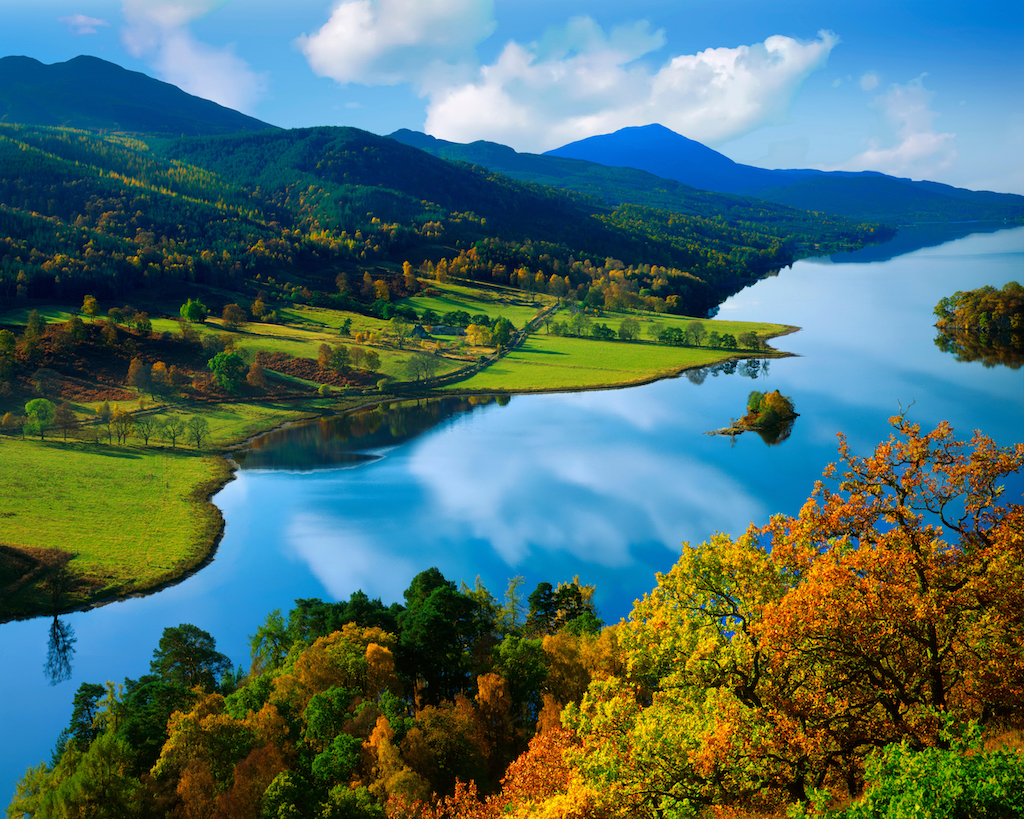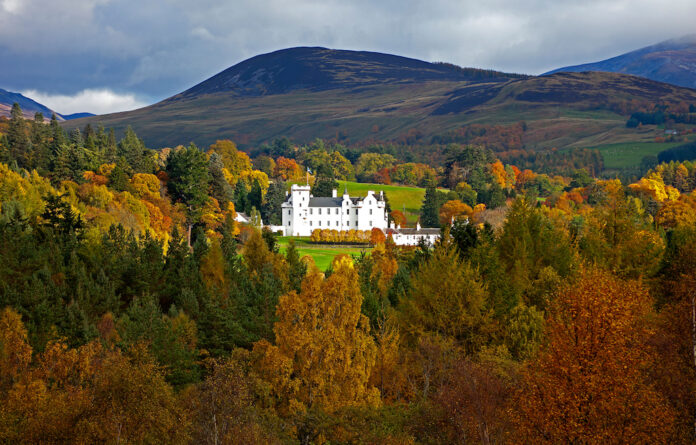A spectacular new touring route links a string of historic sights, and takes in some of Scotland’s most heart-stirring scenery
Words: Helen Ochyra
Think Scotland, think ancient castles. Mountains too, of course, and perhaps an osprey wheeling above a Highland stream. Whisky probably comes to mind, along with golf, a side of leaping salmon, or maybe a glassy loch or thundering waterfall.
These things are quintessential Scotland, and all can be experienced on the recently launched Heart 200 touring route. This 200-mile road trip around the heart of Scotland runs in a loop from Stirling, out into Highland Perthshire, the Trossachs and as far north as the Cairngorms. It links Scotland’s two national parks and demands at least a week of your time to do it justice. Even then, you’ll be spoiled for choice.

Start on a high in Stirling, touring the battlements and buildings of Stirling Castle and peering down over the city from a sheer-sided volcanic crag that has been fortified since the Iron Age. The castle has long guarded the lowest crossing point of the Forth river and it became the preferred residence of most of Scotland’s later medieval monarchs including James V, whose daughter, Mary Queen of Scots, was crowned here in 1543. Tour the royal apartments, now returned to their mid-16th-century glory, see the vast fireplaces of the Great Hall and stroll through the Douglas Gardens, from which there are splendid Highland views.

Stirling’s strategic importance led to many a battle in the castle’s environs. By far the most famous is Bannockburn, commemorated in inimitable style at the Bannockburn Heritage Centre with an engaging 3D game. You’ll learn about weaponry and tactics before being cast as either English or Scottish to fight it out with your fellow visitors in a simulation of the 1314 battle. The fact that England almost always wins proves just how incredible a military strategist Robert the Bruce was.
From Stirling hit the route anti-clockwise, perhaps stopping at Gleneagles for a round of golf, or pausing for a stroll around Loch Leven, a freshwater loch home to hundreds of geese. You’ll cross the river Tay at Perth, Scotland’s ancient capital, and should make time for a half-day visit to Scone Palace. Far from a musty museum piece, the Georgian Gothic house is still very much a family home (for the Earl and Countess of Mansfield) and there’s
a fine collection of porcelain, carved ivories and antique furniture to discover.

Just 20 miles further north, Loch of the Lowes nature reserve is ideal for a short stroll. You can see red squirrels and deer here year-round but time your visit for sometime between April and August and you’re also in with a chance of spotting ospreys and beavers.
The northernmost part of the Heart 200 dips into the Cairngorms National Park, Britain’s largest. The Highland scenery here is breathtaking and there are several interesting wee stops along the route including Pitlochry dam, where you’ll find a fascinating museum on hydroelectricity and a salmon ladder, and Blair Atholl distillery, for a tour and tutored tasting of four whiskies including the Distillery Exclusive Bottling.
A few miles on is Killiecrankie, where you can spot woodpeckers and pine martens as you walk along the wooded river gorge and visit Soldier’s Leap, said to be where a redcoat leapt 18 feet across the River Garry to escape the Jacobites during the gory Battle of Killiecrankie in 1689. Take a look at that distance and make up your own mind about how true this story might be.
Fancy a spot of shopping? At the route’s northernmost point is the House of Bruar, Scotland’s leading country clothing specialist. Browse the merino and cashmere knitwear and don’t miss the food hall, which sells wonderful hampers stocked with the likes of smoked salmon and venison, Strathdon blue cheese and wild boar pâté.
It’s also worth making time for Blair Castle. Tours of this whitewashed and turreted ancient stronghold take in the Scottish baronial architecture and tell the story of the Atholl family over seven centuries. Highlights include the wood-panelled entrance hall and timber-roofed ballroom, while the surrounding parkland is ripe for a stroll, spotting Highland cattle, red squirrels and peacocks along the way.

Your next stop is south at the Queen’s View on Loch Tummel, one of Scotland’s finest viewpoints. You’ll gaze out along the water towards Schiehallion, a beautifully conical mountain popular with hikers, and can take a short walk through the unspoiled woodland.
Save some energy though for the circular one-and-a-half-mile walk on the outskirts of nearby Aberfeldy to see the Birks of Aberfeldy. Immortalised in Robert Burns’ 1787 poem, the birks (from the Scots for birch trees) lead out to the Falls of Moness, a ribbon of raging white water that thunders down the Moness gorge and is at its best in the cool, rainy days of autumn.
From here it’s a short drive on to Loch Tay, a magnificent 15-mile stretch of dark water that is one of the deepest lochs in Scotland. Visit the Scottish Crannog Centre at Kenmore and you’ll walk out over the water to an authentic recreation of an Iron Age loch dwelling. Enthusiastic guides lead tours of the crannog, a roundhouse made from timber, before demonstrating ancient crafts and primitive fire making.
The westernmost section of the Heart 200 runs through Loch Lomond and the Trossachs National Park, a glorious area of sleepy wooded glens and rumpled hills. The highlight of a visit is a boat trip out from Trossachs Pier on the 120-year-old Sir Walter Scott steamship. Currently being refurbished, it will be sailing again in 2022; in the meantime its sister ship the Lady of the Lake cruises the waters of Loch Katrine, a freshwater loch so beautiful it prompted Scott to write his poem Lady of the Lake in 1810, and is also said to have inspired both Samuel Coleridge and William Wordsworth.
En route back towards Stirling call in to Argaty Red Kites. Afternoon is the best time to visit, when the rangers feed the birds, bringing hundreds of them down to a low enough level for up-close sightings and photography. You’ll also hear the story of how these magnificent birds were brought back from the brink of extinction in one of the UK’s most successful ever conservation efforts.
Your trip started with an imposing castle and it ends with one too. Doune Castle in the eponymous village has a fantastically well-preserved gatehouse which dates back to the 14th century and has been seen on screen in both Monty Python and the Holy Grail and Outlander – which makes for a unique audio tour you won’t forget in a hurry.






 © 2024
© 2024